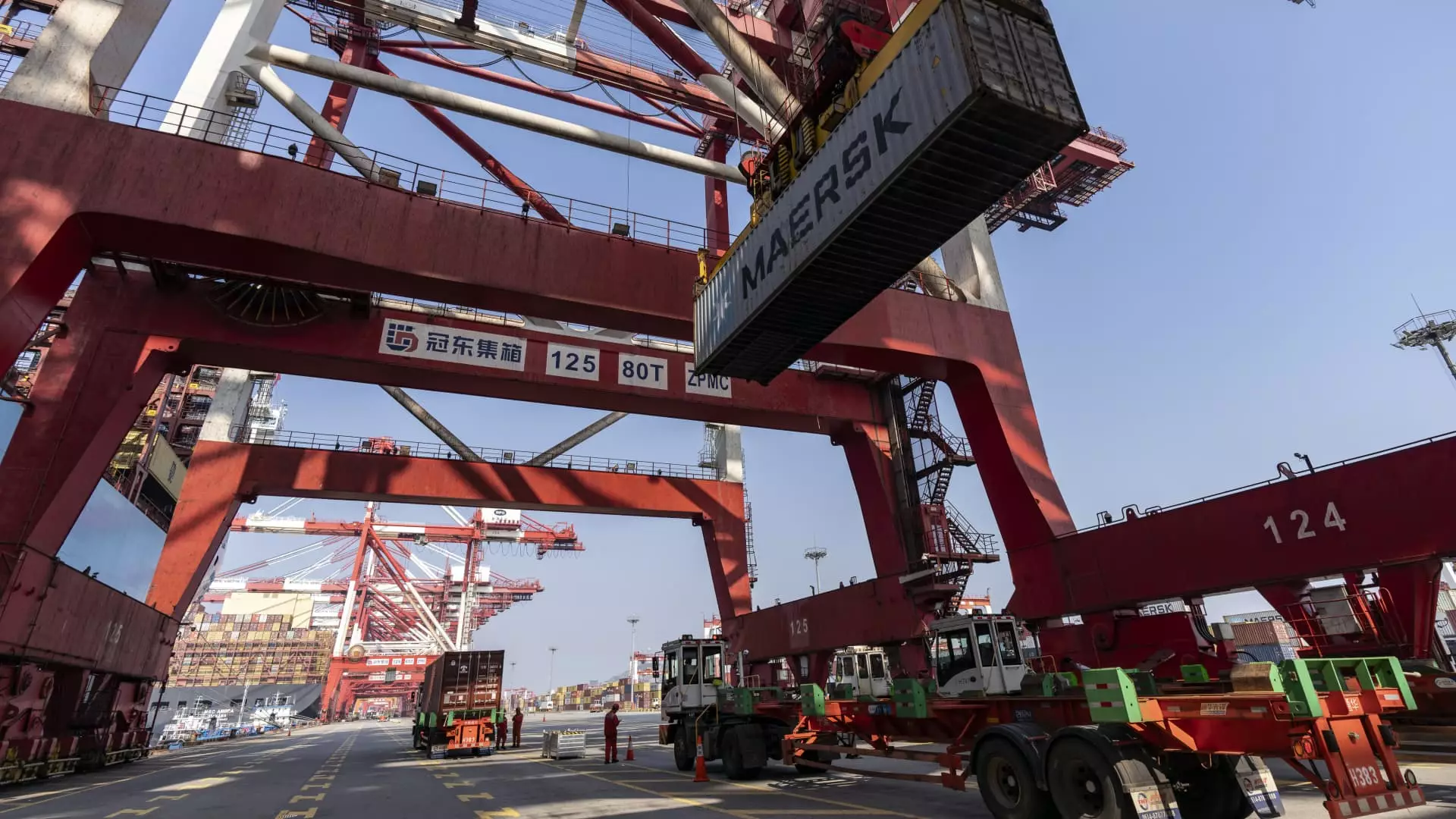The latest customs data from China has painted a concerning picture of the nation’s export and import activities, revealing a noteworthy deviation from expectations. Insights gathered from September’s figures highlight exports climbing by a modest 2.4% year-on-year, while imports edged up a mere 0.3%. Such outcomes starkly contrast economists’ predictions of a 6% growth in exports and a 0.9% increase in imports. As the world’s second-largest economy grapples with fluctuating markets and evolving trade policies, this report raises critical questions about its growth trajectory moving forward.
China’s export sector, historically a significant driver of economic momentum, faces mounting headwinds—particularly in the context of heightened global trade tensions. Analysts predict continued challenges for China’s exports, with geopolitical elements, particularly tariff disputes with major trading partners like the United States and the European Union, complicating the landscape. Zhiwei Zhang, an economist at Pinpoint Asset Management, aptly noted that upcoming fiscal policies are essential for stimulating growth as the country enters the next fiscal year.
Imports from the U.S. did show an increase of 6.7%, and Chinese exports to the U.S. rose by 2.2%, indicating a nuanced relationship between these two economic giants. However, continued tariffs on various products, such as electric vehicles, are foreseen to further inhibit rapid growth in the coming months.
China’s trade dynamics with regional partners offers a more diversified view of its economic connections. Exports to the Association of Southeast Asian Nations (ASEAN)—China’s largest regional trading partner—saw a rise of 5.5%, denoting a potential pivot towards intra-regional trade as a pillar of future economic strategy. Imports from ASEAN countries also demonstrated favorable growth at 4.2%. Nevertheless, trade with the European Union reflected instability, as exports grew by just 1.3% while imports dramatically contracted by 4%.
Furthermore, engagement with BRICS nations remains multifaceted; China witnessed an impressive 16.6% growth in exports to Russia, juxtaposed against an 8.4% reduction in imports from the country. This disparity hints at a selective approach in leveraging strategic alliances based on geopolitical considerations.
The lackluster performance of domestic demand is illustrated palpably through statistical trends in crude oil, natural gas, and coal imports. A notable decline of 10.7% in crude oil imports underscores weakened consumption patterns within China. In tandem, a surge in the import of natural gas indicates certain shifts towards alternative energy sources. This could be a strategic move as China seeks to balance its energy portfolio amid decarbonization initiatives.
The decrease in the consumer price index—a mere 0.1% increase suggests creeping deflationary pressures—adds to the complexity of the domestic landscape. Particularly alarming may be the drop in tourism-related prices, attributed to a lack of consumer enthusiasm despite cultural festivities like the Mid-Autumn Festival and the Golden Week holiday.
In response to these economic challenges, Chinese authorities are hinting at increased fiscal expenditure and an expanded fiscal deficit as part of their strategies for economic recovery. While specifics remain vague, experts believe that raised fiscal initiatives could bolster construction and infrastructure, subsequently stimulating demand for industrial commodities in the short to medium term.
Moreover, the importance of the upcoming third-quarter GDP data is paramount; it will deliver crucial insights into retail sales, industrial production, and fixed asset investments for September. With the backdrop of recently intensified stimulus strategies, including policy shifts since late last month, market participants are left to speculate about potential outcomes.
As China navigates an intricate web of internal and external economic pressures, the fluctuations within its trade sector are crucial indicators of broader economic health. With muted performance in exports and imports, coupled with diminished domestic demand, the nation’s growth prospects could remain stifled without effective interventions. Ultimately, the recovery of its economy will hinge on the balance of fiscal policies, trade negotiations, and revitalization efforts targeted at stimulating internal consumption. The road ahead will require strategic adaptability, as China endeavors to maintain its competitive stance in an ever-evolving global economy.

